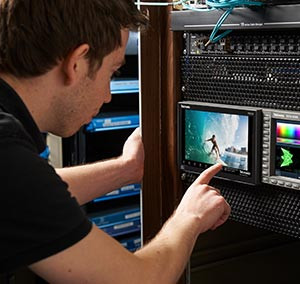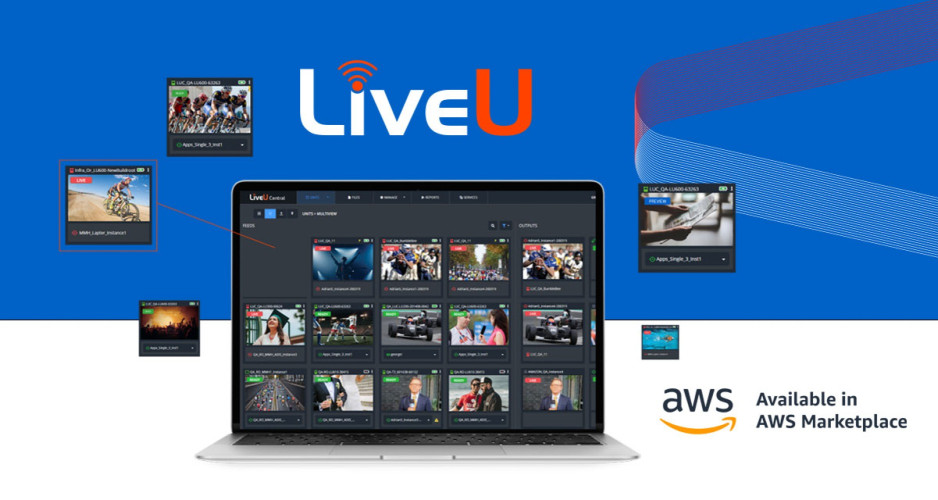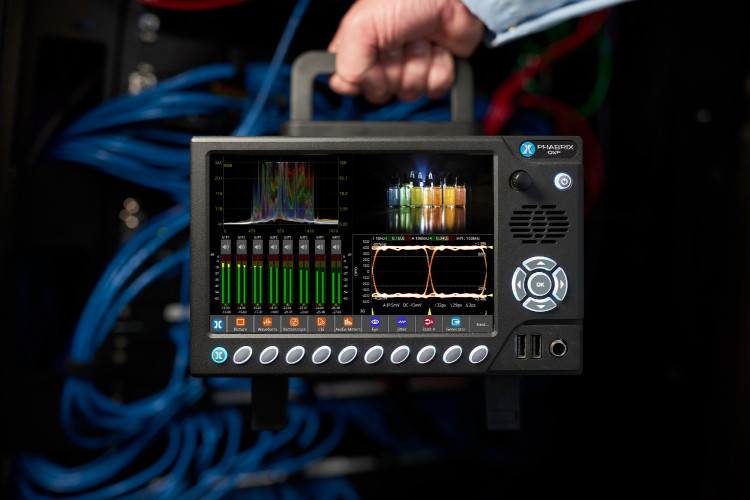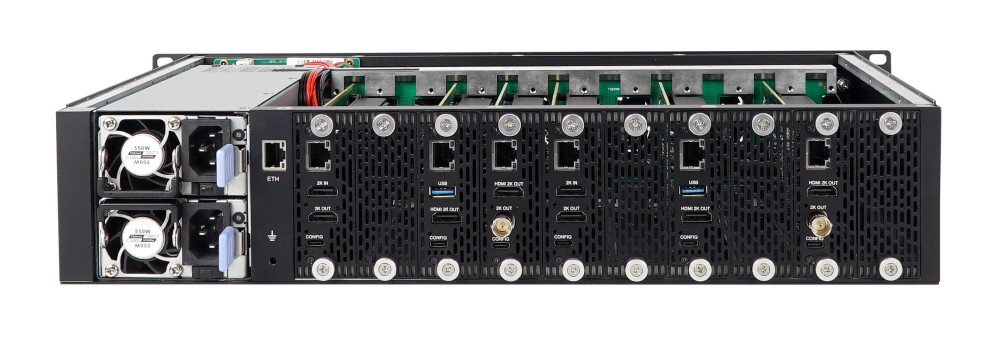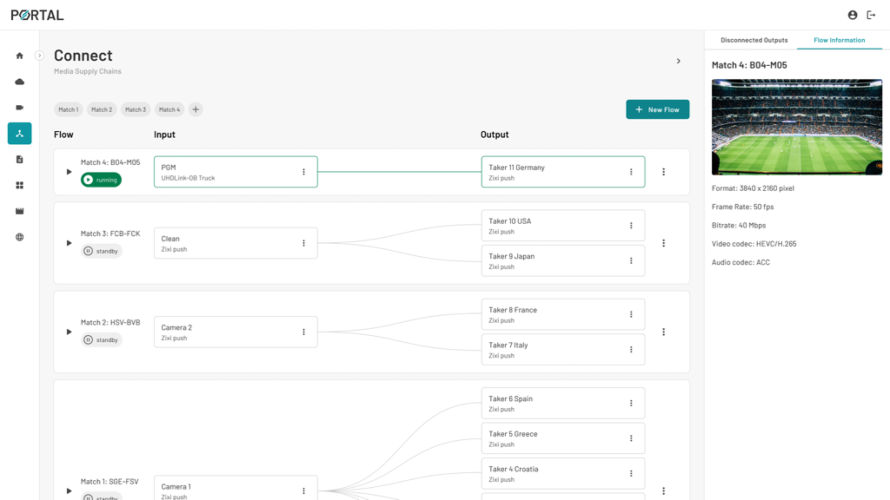Its difficult to attend an industry tradeshow or read a publication without seeing discussions about the technological changes that will impact the broadcast market in upcoming years. These changes include 4K/UHDTV, High Dynamic Range and High Frame Rate video but the transition to an all IP video workflow is regarded as a disruptive technology change that will demand new skill sets and infrastructure.
Introducing IP Video Production.
The move towards IP will impact everyone across the broadcast chain to various degrees, including content producers, broadcasters, providers, distributors and equipment manufacturers, but the biggest impact will be on live production workflows. The transition from SDI towards IP began over 15 years ago and live production is its last remaining stronghold. Some people may ask why SDI remains in use for live production workflows. Ultimately, the technology still works well, gives outstanding image quality, with extremely low levels of jitter or latency and is easy to deploy. In addition, it is an open, non-proprietary and universally supported standard with a thin unidirectional protocol.
Therefore, why would broadcasters want to move to IP? Some people in the industry believe its because of the ability to use commercially off the shelf (COTS) IT-based infrastructures, that help companies take advantage of economies of scale as well as reducing cabling cost and weight. However initial investments in a hybrid IP-SDI infrastructure may cost more the advantage of using IP provides greater routing flexibility offered alongside new workflows including downstream or centralised production. These newly available workflows can lead to new types of content for viewers and for companies it brings new sources of revenue. The first method of encapsulating SDI into IP packets is SMPTE 2022-6 that provides a method for sending video, embedded audio and ancillary data as one flow across the network.
IP Video Challenges .
However, IP does bring challenges to broadcasters including jitter, latency, the risk of dropped packets, lack of synchronicity and asymmetry. Most of the issues in IP networks can be traced back to packet jitter and excessive packer jitter can lead to buffer overflows and underflows causing dropped packets and stalled data flows. Other problems experienced are associated with the timing delay and ensuring asymmetry of precision time protocol (PTP) packet flows. Therefore, broadcasters need to ensure that the relationship between SDI and IP video is consistent to enable seamless frame accurate switching. These challenges can be managed but IP is still a set of complex bi-directional protocols that require knowledge of both the source and destination before deployment.
Collision of Video and Network Engineers.
Deploying IP over video production application involves combining the roles of a video engineer and network engineer. Video engineers are comfortable using SDI, coax, patch panels, black burst and tri-level for timing and signal quality. Therefore, the challenge for the video engineer is to build an understanding of IT technology and the impact of an IT infrastructure on the video. On the other hand, network engineers are familiar with IP Flows, Protocols, networks traffic, router configuration and precision time protocol and network time protocol for timing. Therefore, the network engineers biggest challenge is in understanding video technology and its impact on IT infrastructure. However, it is clear that there is a need for diagnostic monitoring and analysis tools that are usable for both video engineers and network engineers.
Application of IP Video Standards.
When carrying Video over IP in a live production environment, it is important to consider synchronisation and timing. When referring to video over IP, in the context of any video production workflow, the industry refers to the distribution of baseband or lightly compressed video over Real Time Protocol (RTP). These packets are time stamped and carry a sequence number making the measurement of packet delay variations. Therefore, IP has the advantage that many different traffic types can be carried across a network without synchronization difficulties. There is still a need for a precise timing standard to enable frame-accurate switching as well as synchronous video processing. For both IP and ethernet networks, this is provided in the form of PTP version 2. This has also been used as the basis for SMPTE ST2059 PTP standard, which has been specifically introduced for the timing and synchronisation of video transmitted over RTP networks. .
The second method for transporting video over IP networks is being standardized by SMPTE as ST2110. This differs from SMPTE ST2022-6 standard as it separates video, audio and metadata elements into separate IP flows using RTP/UDP. This can help users to avoid wasting bandwidth associated with only carrying video over SDI or IP. Broadcasters could also today use Evertz ASPEN format to carry video over IP and similarly this separates IP flows to carry video, audio and metadata elements. However, these dedicated elements are carried over an MPEG-2 Transport Stream over RTP/UDP.
The Future of IP Production.
The transition to IP is inevitable and many equipment vendors have IP enabled equipment at an early stage of development. This is because both broadcasters and content providers are producing content that is reliant on the availability of an accurate and reliable timing or synchronisation solution. The industry is at the beginning of a long-term transition to IT-based infrastructures. Those involved in the production or facility side of video currently have little experience with this new technology but are extremely experienced in using SDI. Furthermore, the investment in SDI equipment has been so considerable that the use of hybrid IP/SDI networks is likely for the foreseeable future and the transition will take pace gradually. Generally, most production facilities will require new equipment that is able to operate seamlessly in this hybrid environment. As a result, for an equipment vendor to provide equipment that meet these requirements, it will need to understand the challenges of a live production environment and the issues associated with the distribution of video over IP networks.





